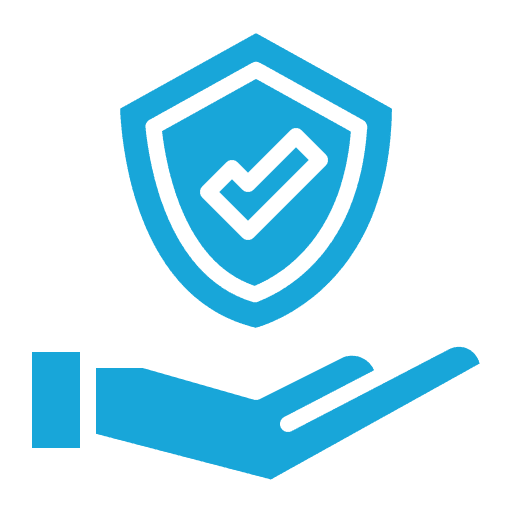
Top Medications Used in Alcohol and Drug Detox
Key Takeaways
- Detox is the first step in recovery and should be done under medical supervision to ensure safety and comfort.
- Medications reduce withdrawal symptoms, prevent complications, and lower relapse risk.
- Alcohol detox: Benzodiazepines (Valium, Ativan, Librium) are first-line; anticonvulsants (Carbamazepine, Gabapentin) and adrenergic agents (Clonidine, Propranolol) may be used.
- Opioid detox: FDA-approved medications include methadone and buprenorphine (Subutex, Suboxone); clonidine or lofexidine may be added for symptom relief.
- Benzodiazepine detox: Gradual tapering is the standard of care, sometimes supported with longer-acting benzos or adjuncts like anticonvulsants.
- Stimulant detox (cocaine, methamphetamine): No FDA-approved medications; off-label options like bupropion or modafinil may be used to manage mood, fatigue, and cravings.
- Safety matters: Inpatient detox centers provide 24/7 monitoring, while outpatient detox may be suitable for mild cases. Home detox is not recommended due to risks of seizures, cardiac issues, or suicidal ideation.
- Transitioning after detox is essential—next levels of care include residential treatment, PHP, and IOP, with therapy (CBT, DBT, trauma-informed care) and relapse prevention medications.
- Insurance coverage varies: Most private insurance, some Medicaid/Medicare, and out-of-network benefits may apply. Admissions teams can help with treatment financing and insurance verification.
What Is Medical Detox and Why Is It the First Step in Recovery?
Medical detox, as defined by the Substance Abuse and Mental Health Services Administration (SAMHSA) and the American Society of Addiction Medicine (ASAM), is the supervised process of safely clearing alcohol or drugs from the body using FDA-approved medications and clinical oversight to manage withdrawal and prevent life-threatening complications.
Detox is the first and most critical step toward recovery, laying the foundation for ongoing therapy and long-term sobriety. Under professional supervision, detox centers provide a safe environment where withdrawal symptoms can be managed and serious complications—such as seizures, dehydration, or delirium tremens—can be prevented.
Role of Medications in Medical Detox
A cornerstone of evidence-based detox is the use of FDA-approved medications to ease symptoms, reduce cravings, and stabilize the body. The specific medications depend on the substance involved: for example, benzodiazepines are commonly used in alcohol withdrawal, while buprenorphine or methadone are used in opioid detox.
Inpatient vs. Outpatient Medical Detox Programs
Detox is not one-size-fits-all. The medications and level of care may vary depending on whether a person is in an inpatient detox program, with 24/7 monitoring, or an outpatient detox program, where individuals receive medical oversight while continuing to live at home.
Why Medications Are Used in Detox?
Medications such as benzodiazepines, methadone, buprenorphine, and other FDA-approved agents are used in detox to make withdrawal safer, more comfortable, and more effective. According to the Mayo Clinic and the National Institute on Drug Abuse (NIDA), evidence shows that certain medications can:
-
Reduce withdrawal symptoms such as anxiety, tremors, nausea, and insomnia.
-
Prevent severe complications, including seizures, delirium tremens, or cardiovascular stress.
-
Lower the risk of early relapse by easing cravings and stabilizing brain chemistry during the transition away from alcohol or drugs.
Importantly, medication-assisted detox is not about replacing one drug with another—it’s about ensuring safety and comfort while the body adjusts to life without substances.
How Does Medical Oversight Improve Detox Safety?
Detox medications are most effective when prescribed and monitored by licensed professionals such as physicians, psychiatrists, and addiction specialists. In a clinical detox program, medical teams:
-
Continuously assess symptoms.
-
Adjust dosages as needed.
-
Respond immediately to complications.
This level of care is vital for substances like alcohol, opioids, and benzodiazepines, where withdrawal can be life-threatening without proper medical management.
Why Is Unsupervised Detox Dangerous?
The National Institutes of Health (NIH) warns that unsupervised detox from alcohol, opioids, or benzodiazepines can trigger seizures, hallucinations, dehydration, or even death.
Attempting detox at home also carries high relapse risk—unmanaged withdrawal often becomes overwhelming within the first few days, preventing people from reaching the next stage of treatment.
In contrast, medically supervised detox provides safety, stability, and a stronger foundation for long-term recovery.
What Medications Are Commonly Used in Alcohol Detox?
According to the American Society of Addiction Medicine (ASAM) and the Mayo Clinic, benzodiazepines, anticonvulsants, and adrenergic agents are most commonly prescribed during alcohol detox to manage Alcohol Withdrawal Syndrome (AWS), reduce complications, and stabilize patients.
Alcohol withdrawal can be among the most dangerous forms of withdrawal, particularly for individuals with a long history of heavy drinking. AWS symptoms may range from mild anxiety and insomnia to life-threatening complications such as seizures or delirium tremens (DTs). To reduce these risks, clinicians rely on medications that provide both safety and comfort.
How Do Benzodiazepines Support Alcohol Detox?
Benzodiazepines—including diazepam (Valium), lorazepam (Ativan), and chlordiazepoxide (Librium)—are considered the first-line treatment for moderate to severe alcohol withdrawal. They:
-
Reduce the risk of seizures.
-
Stabilize vital signs.
-
Ease agitation and anxiety.
-
Are often administered in inpatient detox programs or hospital settings with close monitoring.
When Are Anticonvulsants Used in Alcohol Withdrawal?
Anticonvulsants such as carbamazepine and gabapentin are often used as alternatives or adjuncts to benzodiazepines, particularly in mild-to-moderate AWS. They:
-
Help prevent seizures.
-
Reduce restlessness and insomnia.
-
May be preferred for patients with a history of benzodiazepine misuse or lower risk of severe withdrawal.
What Role Do Adrenergic Medications Play in Alcohol Detox?
Adrenergic medications such as clonidine and propranolol target the autonomic nervous system, which is often overactive during withdrawal. They:
-
Reduce tremors, sweating, elevated heart rate, and high blood pressure.
-
Are used as supportive medications, not stand-alone treatments, since they do not prevent seizures or DTs.
📌 Key Insight: The choice of medication depends on the severity of AWS, the patient’s medical history, and the detox setting (inpatient with 24/7 monitoring or structured outpatient care). Regardless of the approach, medical oversight is essential for preventing complications and ensuring safe stabilization.
What Medications Are Commonly Used in Opioid Detox?
Medication-Assisted Treatment (MAT), endorsed by the CDC and FDA, uses medications such as methadone, buprenorphine, and non-opioid options like clonidine or lofexidine to reduce withdrawal symptoms, cravings, and relapse risk during opioid detox.
Opioid withdrawal can be intensely uncomfortable, with symptoms like muscle pain, nausea, diarrhea, anxiety, and severe cravings. While usually not life-threatening, unmanaged withdrawal can lead to relapse and increase overdose risk. MAT is an evidence-based approach that improves safety and supports recovery outcomes.
How Does Methadone Help in Opioid Detox?
Methadone is a long-acting opioid agonist that binds to opioid receptors in a controlled way without producing the euphoric high of short-acting opioids. It:
-
Reduces cravings and prevents withdrawal symptoms.
-
Stabilizes brain chemistry during detox.
-
Is dispensed under medical supervision, often in specialized clinics as part of a maintenance program.
Why Is Buprenorphine a First-Line Medication for Opioid Detox?
Buprenorphine (brand names: Subutex, Suboxone with naloxone) is a partial opioid agonist that reduces cravings and withdrawal discomfort while lowering the risk of misuse. It:
-
Activates opioid receptors with a ceiling effect to reduce overdose risk.
-
Can be prescribed in outpatient settings, making it more accessible than methadone.
-
Is widely used as a first-line option in MAT protocols for OUD.
What Role Do Clonidine and Lofexidine Play in Opioid Detox?
Clonidine and lofexidine are non-opioid medications that help manage withdrawal symptoms such as sweating, chills, rapid heart rate, and agitation. They:
-
Do not address opioid cravings directly.
-
Are often used as supportive therapy when MAT medications are unavailable or during tapering.
📌 Key Insight: Detox is not just about managing withdrawal—it’s the first step toward long-term recovery. Clinical guidelines recommend transitioning into ongoing MAT and behavioral therapy to reduce relapse and overdose risk, while medical oversight ensures safety and effective stabilization.
Comparison of Medications Used in Opioid Detox
| Medication | Type of Action | Primary Benefits | Risks / Considerations | Typical Setting |
| Methadone | Full opioid agonist (long-acting) | Strong craving reduction, prevents withdrawal, stabilizes brain chemistry | Risk of dependence, must be dispensed daily at licensed clinics | Specialized methadone clinics, inpatient detox |
| Buprenorphine (Subutex, Suboxone) | Partial opioid agonist (safer profile) | Reduces withdrawal and cravings, lower overdose risk, ceiling effect reduces misuse | Possible dependence, requires certified prescribers | Outpatient MAT programs, inpatient detox |
| Clonidine / Lofexidine | Non-opioid (alpha-2 adrenergic agonist) | Eases physical withdrawal symptoms (sweating, anxiety, rapid heart rate) | Does not address cravings, may cause low blood pressure or drowsiness | Inpatient or outpatient detox as supportive medication |
📌 Takeaway: Both methadone and buprenorphine are FDA-approved for treating opioid use disorder (OUD) as part of Medication-Assisted Treatment (MAT), while clonidine and lofexidine are supportive options that address symptoms but not cravings. The best choice depends on medical history, treatment setting, and long-term recovery goals.
What Is the Standard Approach to Benzodiazepine Detox?
According to the American Society of Addiction Medicine (ASAM), the gold standard for benzodiazepine detox is a medically supervised gradual taper, which reduces the dose over time to lower the risk of seizures, rebound anxiety, and other withdrawal complications.
Unlike alcohol or opioids, benzodiazepine detox does not rely on replacing or blocking the substance. A gradual taper allows the brain and nervous system to adjust slowly, minimizing severe withdrawal symptoms such as seizures, panic attacks, or rebound anxiety.
How Does Gradual Tapering Work in Benzodiazepine Detox?
Gradual tapering involves:
-
Reducing the dose of the current benzodiazepine or switching to a longer-acting alternative.
-
Allowing the nervous system to adapt without sudden withdrawal.
-
Following individualized taper schedules, often lasting weeks or months depending on the person’s history of use.
Why Are Longer-Acting Benzodiazepines Used in Detox?
Medications like diazepam (Valium) and clonazepam (Klonopin) are often substituted for shorter-acting benzodiazepines (e.g., alprazolam/Xanax) to:
-
Maintain stable blood levels.
-
Reduce the intensity of withdrawal and rebound symptoms.
-
Smooth the tapering process for safer detox.
What Adjunct Medications Support Benzodiazepine Detox?
Adjunct medications may be prescribed to support tapering and manage co-occurring symptoms:
-
Anticonvulsants (carbamazepine, gabapentin) to reduce seizure risk and stabilize mood.
-
Antidepressants to address anxiety or depressive symptoms, without replacing the taper.
📌 Key Insight: Benzodiazepine withdrawal can be unpredictable and potentially life-threatening. Detox should always be conducted under medical supervision. Outpatient programs may suit mild dependence, but long-term or high-dose users often require inpatient monitoring for safety and successful stabilization.
Example: Generalized Benzodiazepine Taper Protocol
| Phase | Approach | Goal | Notes |
| Stabilization | Switch to a longer-acting benzodiazepine (e.g., diazepam) if appropriate | Create steady blood levels | Reduces risk of rebound symptoms |
| Initial Reduction | Gradual dose decrease (e.g., 10–25% reduction every 1–2 weeks) | Minimize acute withdrawal | Pace adjusted based on symptom severity |
| Intermediate Phase | Continue slow, controlled reductions | Allow nervous system to adapt | May pause taper if symptoms become severe |
| Final Phase | Smaller reductions (e.g., 5–10%) at longer intervals | Safely discontinue medication | Often the most challenging stage |
| Adjunct Support | Consider anticonvulsants, antidepressants, or behavioral therapy | Support mental health and seizure prevention | Always used under medical supervision |
📌 Important Note: This chart is for educational purposes only and is not a substitute for medical advice. Actual tapering schedules must be tailored by a physician or addiction specialist following ASAM clinical guidelines.
Are There Medications for Stimulant Detox (Cocaine, Methamphetamine)?
Unlike alcohol or opioids, there are currently no FDA-approved medications specifically for stimulant detox. Substances such as cocaine and methamphetamine disrupt dopamine regulation, causing a severe “crash” when use stops. Symptoms may include:
-
Fatigue and lethargy
-
Depression and low mood
-
Sleep disturbances
-
Irritability and strong cravings
While rarely life-threatening, these symptoms can be extremely difficult to manage without professional support. Clinicians often rely on off-label medications alongside supportive care to stabilize patients during early recovery.
What Off-Label Medications Are Used in Stimulant Detox?
Common off-label options include:
-
Bupropion (Wellbutrin): May improve mood, reduce cravings, and ease irritability.
-
Modafinil: Promotes wakefulness, combats severe fatigue, and improves concentration.
-
Antidepressants (SSRIs or SNRIs): Address underlying depression or anxiety during early recovery.
What Supportive Care Is Provided in Clinical Stimulant Detox?
Because no standardized medication protocol exists, stimulant detox emphasizes supportive care to help patients stabilize and prevent relapse:
-
Sleep regulation and structured rest
-
Nutritional support to restore energy balance
-
Therapy and counseling to manage mood swings and cravings
-
Close monitoring during the high-risk early withdrawal phase
📌 Key Insight: While no single “detox medication” exists for stimulants, combining off-label prescribing, behavioral therapy, and structured support yields the best outcomes. Research into stimulant use disorder medications is ongoing, but individualized clinical judgment is currently essential.
Symptom Management in Stimulant Detox (Cocaine, Methamphetamine)
| Withdrawal Symptom | Possible Medication / Support | Clinical Notes |
| Fatigue / Lethargy | Modafinil (off-label), structured rest, nutritional support | Helps improve wakefulness and concentration |
| Cravings / Irritability | Bupropion (Wellbutrin), behavioral therapy | May reduce dopamine imbalance and ease cravings |
| Depression / Low Mood | Antidepressants (SSRIs, SNRIs), counseling, support groups | Targets mood regulation during the “crash” phase |
| Sleep Disturbances | Short-term sleep hygiene strategies, non-addictive sleep aids | Focus on restoring circadian rhythm |
| Anxiety / Agitation | Supportive counseling, relaxation techniques, sometimes SSRIs | Avoid benzodiazepines due to risk of dependence |
Why Is Individualized Planning Essential in Detox?
According to ASAM and SAMHSA, individualized detox planning is critical because each patient’s substance use history, co-occurring disorders, and medical profile influence safety, medication selection, and treatment outcomes.
Detox is not one-size-fits-all. A well-designed clinical protocol considers:
-
Type and severity of substance dependence
-
Co-occurring mental or physical health conditions
-
Individualized monitoring and supportive care needs
What Is the Difference Between Medical Detox Centers and Home Detox?
Medical detox centers provide:
-
24/7 monitoring by medical professionals
-
Controlled medication protocols
-
Immediate access to emergency care
This level of supervision is especially critical for alcohol, opioid, and benzodiazepine withdrawal, where complications can escalate quickly.
Home detox, in contrast, lacks professional oversight and carries higher risks of complications, including seizures, severe dehydration, or psychiatric crises. While some attempt detox at home, professional supervision significantly increases safety and success rates.
Inpatient vs. Outpatient Detox:
-
Inpatient Detox: Patients live on-site with round-the-clock monitoring, emergency care access, and structured medical protocols. Ideal for moderate to severe withdrawal risk.
-
Outpatient Detox: Suitable for individuals with mild to moderate withdrawal, strong social support, and medical stability. Patients live at home but receive regular medical supervision and support.
Why Is Continuous Monitoring Critical During Detox?
Withdrawal can stress both body and mind. Continuous monitoring by physicians, psychiatrists, and nursing staff helps detect and manage complications, including:
-
Seizures or delirium tremens (DTs) in alcohol withdrawal
-
Cardiac issues such as arrhythmias or blood pressure spikes
-
Psychiatric complications including severe anxiety, depression, or suicidal ideation
What Role Do Families and Aftercare Play in Detox?
Families play a vital role in supporting patients through detox and recovery. Their involvement can include:
-
Education about withdrawal and recovery
-
Participation in treatment planning
-
Support in transitioning into aftercare programs such as residential treatment, Partial Hospitalization Programs (PHP), or Intensive Outpatient Programs (IOP)
-
Guidance on relapse prevention strategies
📌 Key Insight: The safest and most effective detox occurs under professional supervision, where care is personalized, risks are managed, and patients are set up for long-term recovery. Home detox lacks this structure and significantly increases the risk of complications.
Why Is Treatment After Detox Essential for Recovery?
Detox alone does not treat addiction. According to the Substance Abuse and Mental Health Services Administration (SAMHSA) and the American Society of Addiction Medicine (ASAM), continuing into structured care with therapy and relapse prevention is essential to address the psychological, behavioral, and environmental factors driving substance use.
Detox clears substances from the body and stabilizes withdrawal, but it does not resolve the underlying causes of addiction. For lasting sobriety, individuals must transition into programs that build coping skills, emotional resilience, and long-term relapse prevention strategies.
What Levels of Care Follow Detox?
After detox, patients typically move into one of the following levels of care based on clinical needs, stability, and support systems:
-
Residential Treatment Program (Inpatient Rehab): Provides a structured, immersive environment where individuals live on-site, participate in daily therapy, receive medical care, and engage in recovery programming.
-
Partial Hospitalization Program (PHP): A step-down level of care offering intensive daytime treatment while allowing patients to return home or to a sober living environment at night.
-
Intensive Outpatient Program (IOP): Flexible scheduling with several therapy sessions per week, designed for those ready to balance recovery with work, school, or family responsibilities.
How Is Therapy Integrated Into Post-Detox Recovery?
Recovery programs combine medical support with evidence-based behavioral therapies to address underlying trauma, regulate emotions, and develop healthy coping strategies:
-
Cognitive Behavioral Therapy (CBT): Identifies and changes negative thought patterns linked to substance use.
-
Dialectical Behavior Therapy (DBT): Provides tools for emotional regulation, mindfulness, and distress tolerance.
-
Trauma-Informed Care: Recognizes the impact of past trauma and incorporates healing approaches to build resilience.
📌 Key Insight: Detox is just the first step. Long-term recovery depends on structured programs, therapy, and ongoing support that help individuals develop skills to maintain sobriety and prevent relapse.
What Medications Support Long-Term Relapse Prevention?
Long-term recovery may include FDA-approved medications to stabilize brain chemistry, reduce cravings, and lower relapse risk. These medications are used alongside behavioral therapies and structured aftercare for the best outcomes.
For Alcohol Use Disorder (AUD):
-
Naltrexone: Reduces alcohol cravings and the rewarding effects of drinking.
-
Acamprosate: Supports brain chemistry balance and decreases the desire to drink.
-
Disulfiram: Discourages drinking by causing unpleasant reactions if alcohol is consumed.
For Opioid Use Disorder (OUD):
-
Methadone: A long-acting opioid agonist that stabilizes the brain and reduces withdrawal and cravings.
-
Buprenorphine: A partial opioid agonist that reduces cravings and withdrawal while lowering the risk of misuse.
📌 Key Insight: Sustained recovery requires more than detox. The combination of relapse prevention medications, evidence-based therapy, and structured treatment equips individuals with the tools to maintain a substance-free life.
At Legacy Healing Center, patients receive personalized, full-spectrum care—from medical detox to PHP, IOP, and long-term aftercare—ensuring support not only to get sober but to stay sober.
Frequently Asked
Questions about Top Medications Used In Alcohol And Drug Detox
Are these medications addictive?
Some detox medications, such as benzodiazepines or methadone, have the potential for dependence if misused. However, when prescribed in a clinical detox program under medical supervision, they are carefully monitored to reduce risks.
The primary purpose of these medications is short-term stabilization, not long-term substitution. Non-addictive options (such as clonidine, lofexidine, or acamprosate) are also widely used.
How long will I need medication during detox?
The length of medication use varies by substance, severity of dependence, and individual health needs.
- Alcohol or benzodiazepine detox may require medications for several days to weeks.
- Opioid detox often uses medications for one to two weeks, though some transition into ongoing Medication-Assisted Treatment (MAT) for relapse prevention.
Your care team will create a personalized clinical detox protocol to taper or discontinue medications safely.
Can detox be done without medications?
Yes, but it is not recommended in many cases. Unmedicated or “cold turkey” detox can be extremely uncomfortable and, in the case of alcohol or benzodiazepines, even life-threatening due to risks like seizures or delirium tremens. Medications make detox safer, more comfortable, and more effective, greatly reducing the likelihood of early relapse.
What’s the difference between detox meds and maintenance meds?
- Detox medications are short-term tools used to manage acute withdrawal symptoms and stabilize the body.
- Maintenance medications are prescribed for longer-term relapse prevention. Examples include naltrexone, acamprosate, and disulfiram for alcohol use disorder, or methadone and buprenorphine for opioid use disorder. These are often paired with behavioral therapy to support ongoing recovery.
Do insurance providers cover medical detox?
Most private insurance plans provide coverage for detox and addiction treatment, though the extent of coverage depends on the policy and whether the provider is in-network or out-of-network. Medicaid and Medicare may also cover detox services, but availability depends on the state and specific program requirements. If you don’t have insurance or your plan has limited coverage, many facilities offer treatment financing options to help make care more accessible.
Tip: At Legacy Healing Center, our admissions team can verify your benefits and explain your options so you know exactly what is covered before beginning treatment.











 Verify Insurance
Verify Insurance 